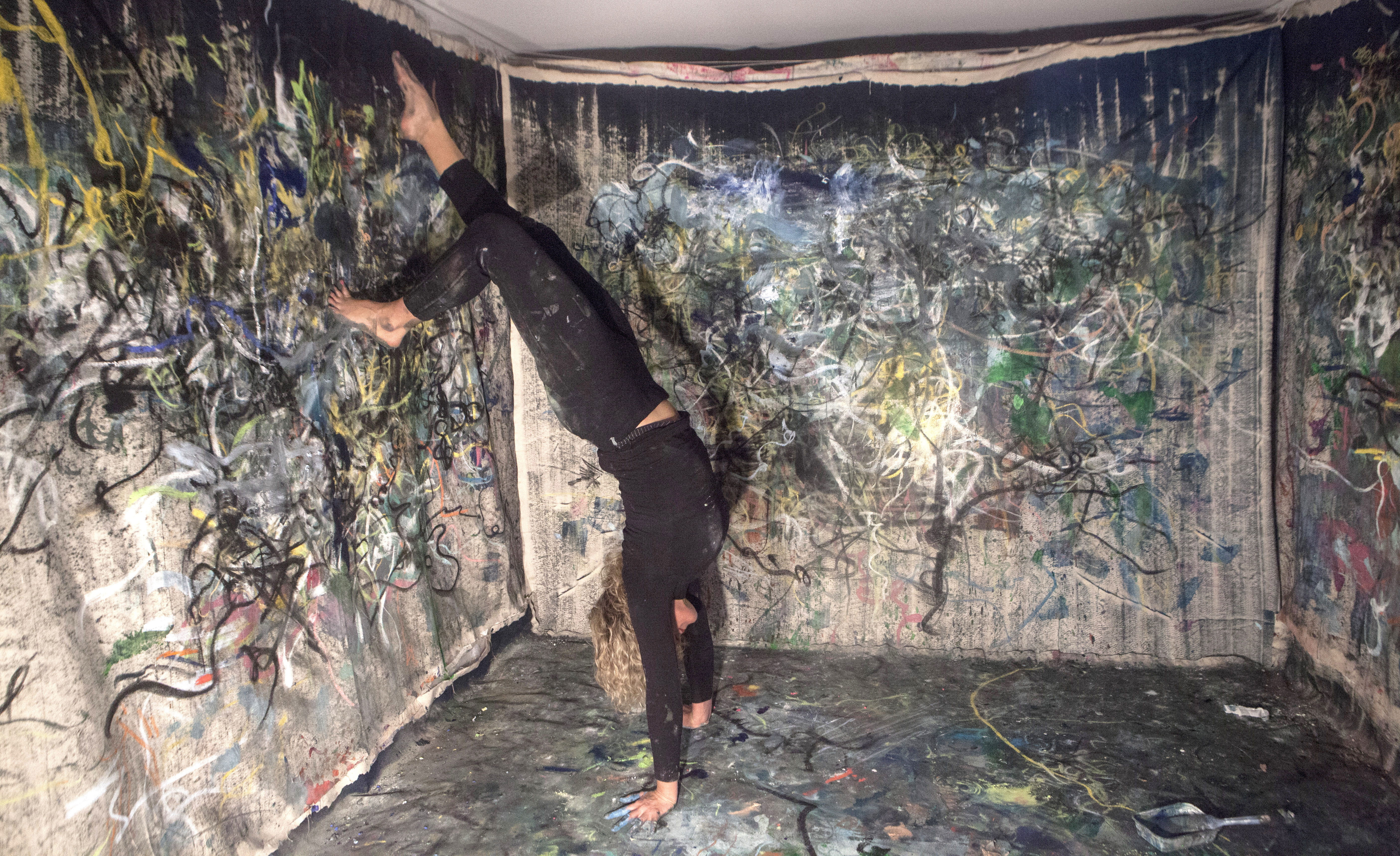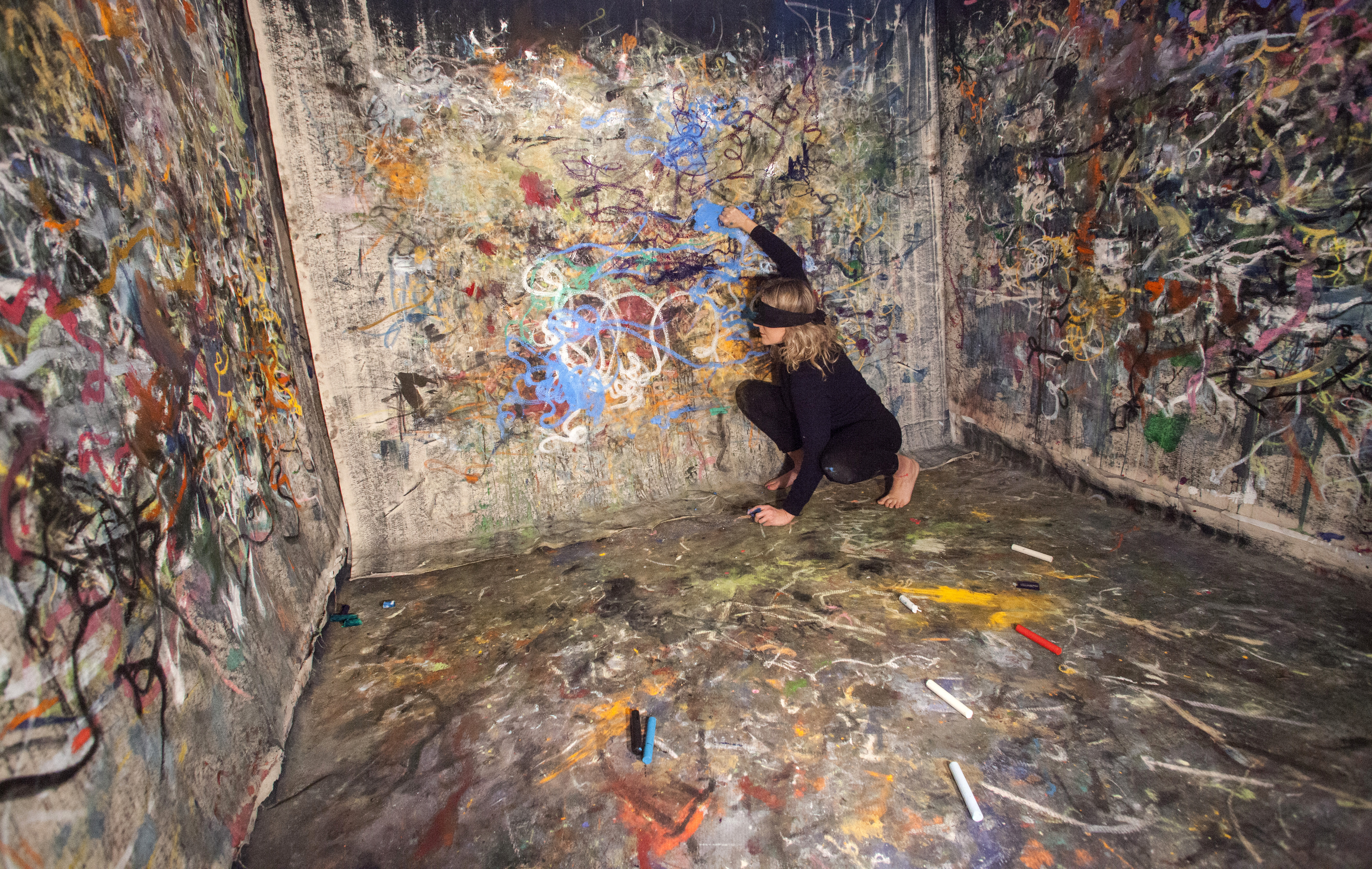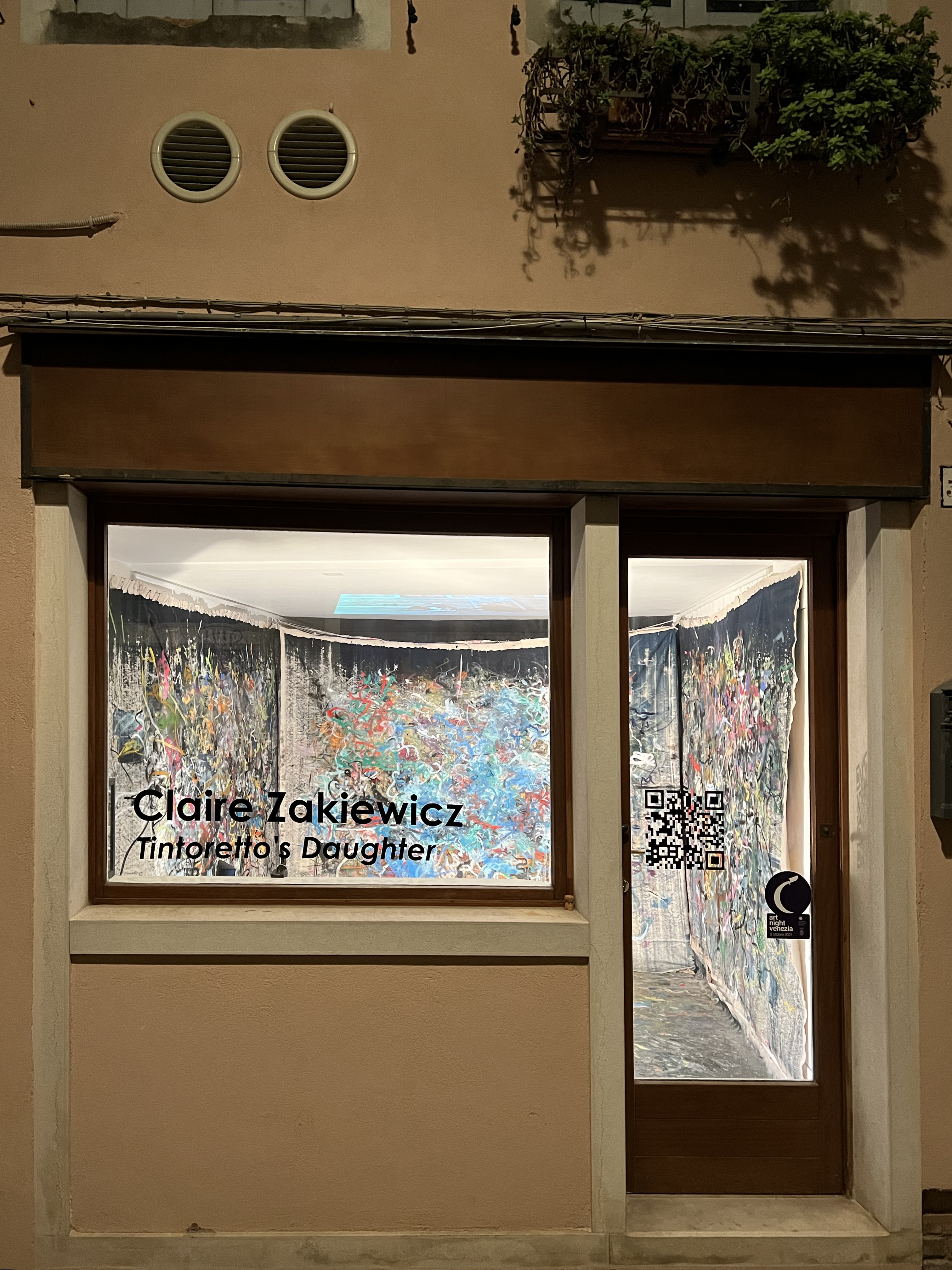Tintoretto's Daughter
San Marco 3209/A
Salizada Malipiero
30124 Venice, Italy
(1 minute from Palazzo Grassi)
Installation viewable through window at all times from:
October 27 - November 26, 2022
Performances:
October 27 - November 4
6pm - 7pm daily
November 5
5 - 6pm
November 25
5-6pm
Finissage
November 26
5:30 -6:30pm
ARTEATELIER is excited to present Tintoretto's Daughter, a site-specific performance painting and installation by Claire Zakiewicz, during the closing month of the 2022 Biennale of Contemporary Art.
From October 27 through November 27, 2022 Zakiewicz will stage a compelling re-imagining of the story of Tinteretto’s daughter, Marietta Robusti (also knows as Tintoretta).
In 2019, a chance encounter in Venice led to Zakiewicz to stay overnight at Tintoretto's house, where she conversed with the famous Renaissance artist in the liminal state between waking and sleep. Zakiewicz’s unexpected dream dialogue with Tintoretto inspired her investigation into his relationship with his daughter Marietta and her contribution to his work, her visibility as an artist and the secrets she kept.
The window of the gallery will provide the audience with an extraordinary lens onto an intimate performance, as the artist, blindfolded, channels Tintoretta, through an improvisational performance painting, accompanied by a musical composition produced in collaboration with young women artists. The soundtrack will filter through the public walkway, echoing 15th Century Venetian music, field recordings from streets of Venice, text, music and lyrics written by Zakiewicz and her assistants and collaborators and sounds from the work in progress inside the studio.
Incorporating dance, acting and automatic drawing, the artist will create a large-scale performance painting which embodies the flow of time, drawing on the work produced by Marietta in the sixteenth century: expressive portraits in which the dramatic lighting conjures her pioneering spirit. For Zakiewicz, Marietta represents the forgotten and intentionally obscured histories of women artists and their contributions.
From 6:00pm to 11:00pm daily there will be a screening of Zakiewicz’s 2018 performance Perspectives In Motion, a collaboration with Venetian dancer Laura Colomban and Venezuelan performer Mariana Alviaraz.
“When I was doing this performance there was an exhibition of Tintoretto’s work on the other side of Academia bridge. As I was drawing with my eyes closed I imagined conversing with Tintoretto and wondered about the longevity and impact of great art. The mark-making is a visual expression of movement-based active listening, imagination and attunement to the environment and objects. It’s an inquiry into how our movements continuously and subconsciously change, depending on what we hear, see, imagine, touch and interact with.”
The exhibition coincides with the closing month of Milk of Dreams: the 59th Biennale of Contemporary Art, 2022.
Collaborators:
@Rubydreww
@flosspopss
@lauracolomban
@marianalviarez
@markedwardsmithve
@chrisfreemangallery
|

















